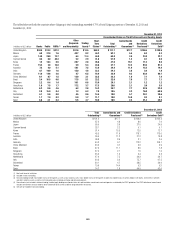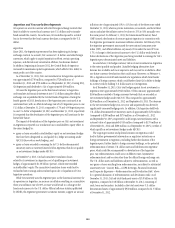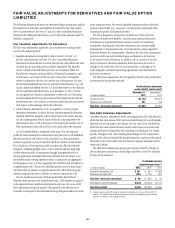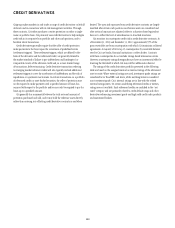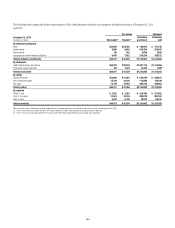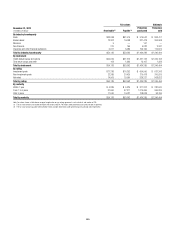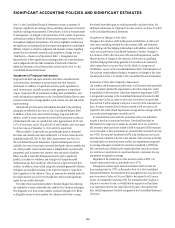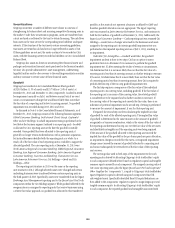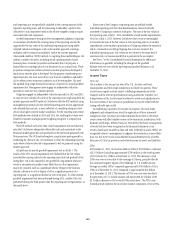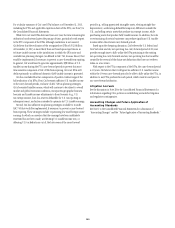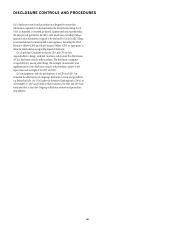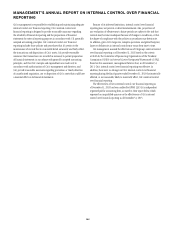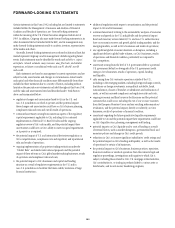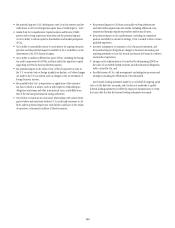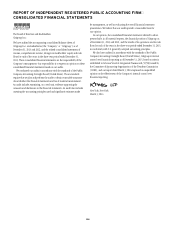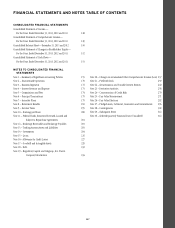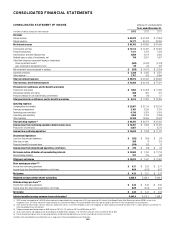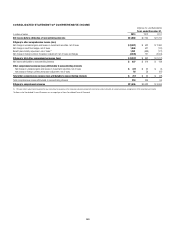Citibank 2013 Annual Report Download - page 157
Download and view the complete annual report
Please find page 157 of the 2013 Citibank annual report below. You can navigate through the pages in the report by either clicking on the pages listed below, or by using the keyword search tool below to find specific information within the annual report.139
each reporting unit are specifically included in the carrying amount of the
respective reporting units, and the remaining stockholders’ equity is then
allocated to each component based on the relative tangible common equity
associated with each component.
Goodwill impairment testing involves management judgment, requiring
an assessment of whether the carrying value of the reporting unit can be
supported by the fair value of the individual reporting unit using widely
accepted valuation techniques, such as the market approach (earnings
multiples and/or transaction multiples) and/or the income approach
(discounted cash flow (DCF) method). In applying these methodologies, Citi
utilizes a number of factors, including actual operating results, future
business plans, economic projections and market data. Citi prepares a
formal three-year strategic plan for its businesses on an annual basis. These
projections incorporate certain external economic projections developed at
the point in time the plan is developed. For the purpose of performing any
impairment test, the most recent three-year forecast available is updated by
Citi to reflect current economic conditions as of the testing date. Citi used
the updated long-range financial forecasts as a basis for its annual goodwill
impairment test. Management may engage an independent valuation
specialist to assist in Citi’s valuation process.
Citigroup engaged an independent valuation specialist in 2013 and 2012
to assist in Citi’s valuation for most of the reporting units employing both the
market approach and DCF method. Citi believes that the DCF method, using
management projections for the selected reporting units and an appropriate
risk-adjusted discount rate, is most reflective of a market participant’s view
of fair values given current market conditions. For the reporting units where
both methods were utilized in 2013 and 2012, the resulting fair values were
relatively consistent and appropriate weighting was given to outputs from
both methods.
The DCF method used at the time of each impairment test used discount
rates that Citi believes adequately reflected the risk and uncertainty in the
financial markets generally and specifically in the internally generated cash
flow projections. The DCF method employs a capital asset pricing model in
estimating the discount rate. Citi continues to value the remaining reporting
units where it believes the risk of impairment to be low, primarily using the
market approach.
Citi performs its annual goodwill impairment test as of July 1. The
results of the 2013 annual impairment test validated that the fair values
exceeded the carrying values for the reporting units that had goodwill at the
testing date. Citi is also required to test goodwill for impairment whenever
events or circumstances make it more likely than not that impairment
may have occurred, such as a significant adverse change in the business
climate, a decision to sell or dispose of all or a significant portion of a
reporting unit, or a significant decline in Citi’s stock price. No other interim
goodwill impairment tests were performed during 2013, outside of the test
performed during the third quarter after the reporting unit reorganization, as
discussed above.
Since none of the Company’s reporting units are publicly traded,
individual reporting unit fair value determinations cannot be directly
correlated to Citigroup’s common stock price. The sum of the fair values of
the reporting units at July 1, 2013 exceeded the overall market capitalization,
of Citi as of July 1, 2013. However, Citi believes that it was not meaningful
to reconcile the sum of the fair values of Citi’s reporting units to its market
capitalization as the market capitalization of Citigroup reflects the execution
risk in a transaction involving Citigroup due to its size. However, the
individual reporting units’ fair values are not subject to the same level of
execution risk or a business model that is perceived to be as complex.
See Note 17 to the Consolidated Financial Statements for additional
information on goodwill, including the changes in the goodwill
balance year-over-year and the reporting unit goodwill balances as of
December 31, 2013.
Income Taxes
Overview
Citi is subject to the income tax laws of the U.S., its states and local
municipalities and the foreign jurisdictions in which Citi operates. These
tax laws are complex and are subject to differing interpretations by the
taxpayer and the relevant governmental taxing authorities. Disputes over
interpretations of the tax laws may be subject to review and adjudication by
the court systems of the various tax jurisdictions or may be settled with the
taxing authority upon audit.
In establishing a provision for income tax expense, Citi must make
judgments and interpretations about the application of these inherently
complex tax laws. Citi must also make estimates about when in the future
certain items will affect taxable income in the various tax jurisdictions, both
domestic and foreign. Deferred taxes are recorded for the future consequences
of events that have been recognized in the financial statements or tax
returns, based upon enacted tax laws and rates. Deferred tax assets (DTAs) are
recognized subject to management’s judgment that realization is more likely
than not. See Note 9 to the Consolidated Financial Statements for a further
discussion of Citi’s tax provision and related income tax assets and liabilities.
DTAs
At December 31, 2013, Citi had recorded net DTAs of $52.8 billion, a decrease
of $2.5 billion (including approximately $700 million in the fourth quarter
of 2013) from $55.3 billion at December 31, 2012. The decrease in total
DTAs year-over-year was due to the earnings of Citicorp, partially offset by
the continued negative impact of Citi Holdings on U.S. taxable income.
Foreign tax credits (FTCs) composed approximately $19.6 billion of Citi’s
DTAs as of December 31, 2013, compared to approximately $22 billion
as of December 31, 2012. The decrease in FTCs year-over-year was due to
the generation of U.S. taxable income and represented $2.4 billion of the
$2.5 billion decrease in Citi’s overall DTAs noted above. The FTCs carry-
forward periods represent the most time-sensitive component of Citi’s DTAs.


